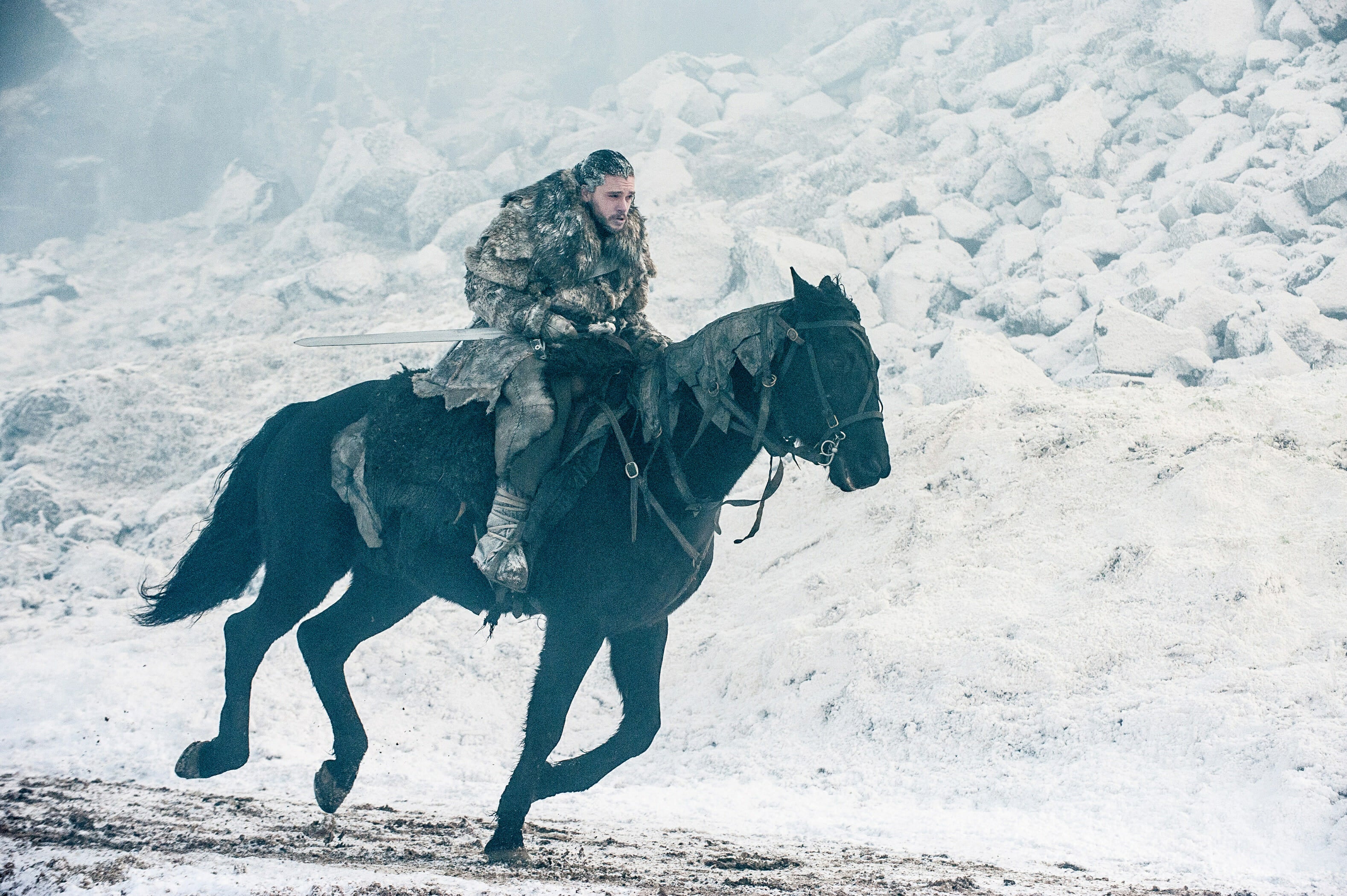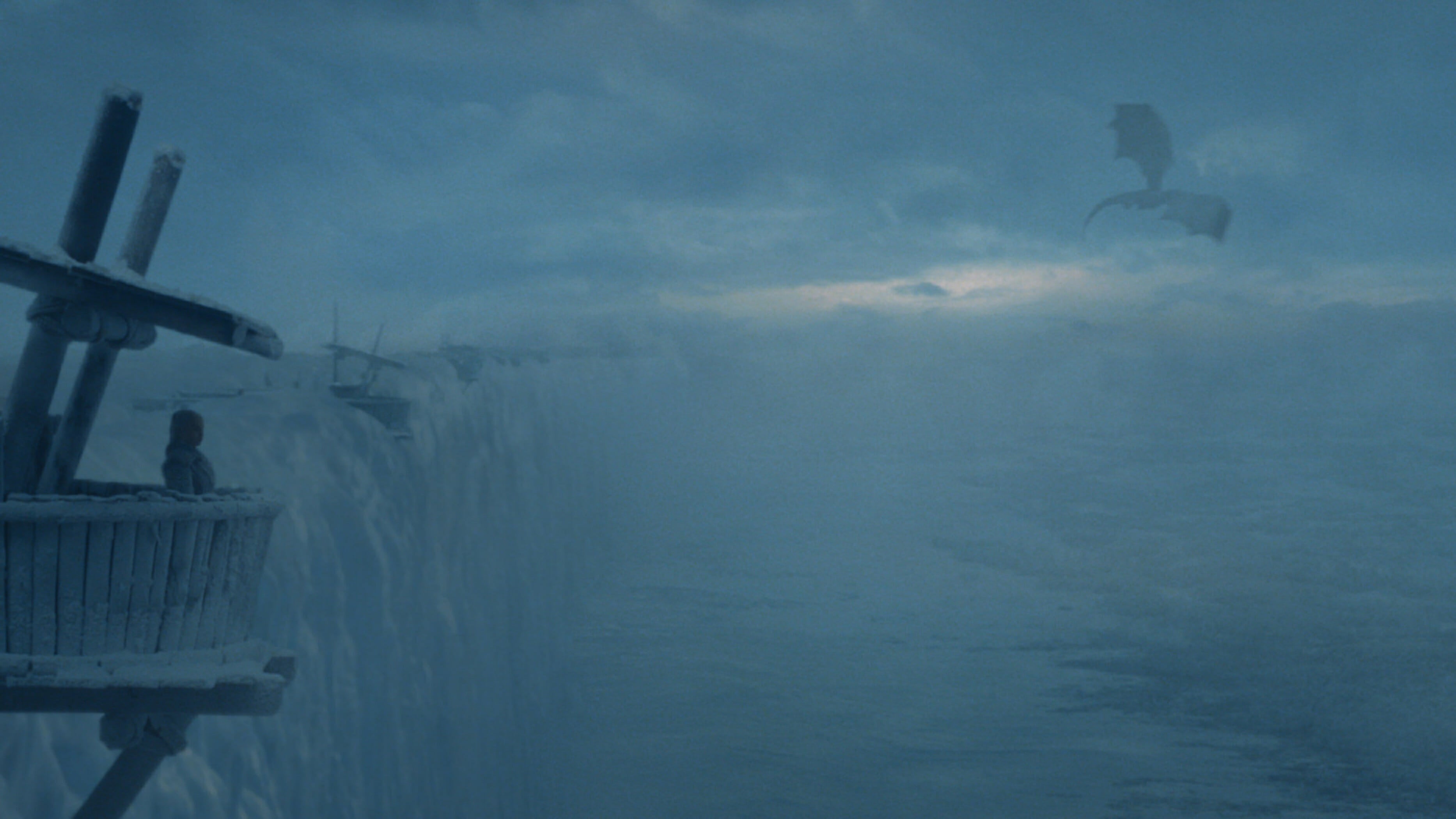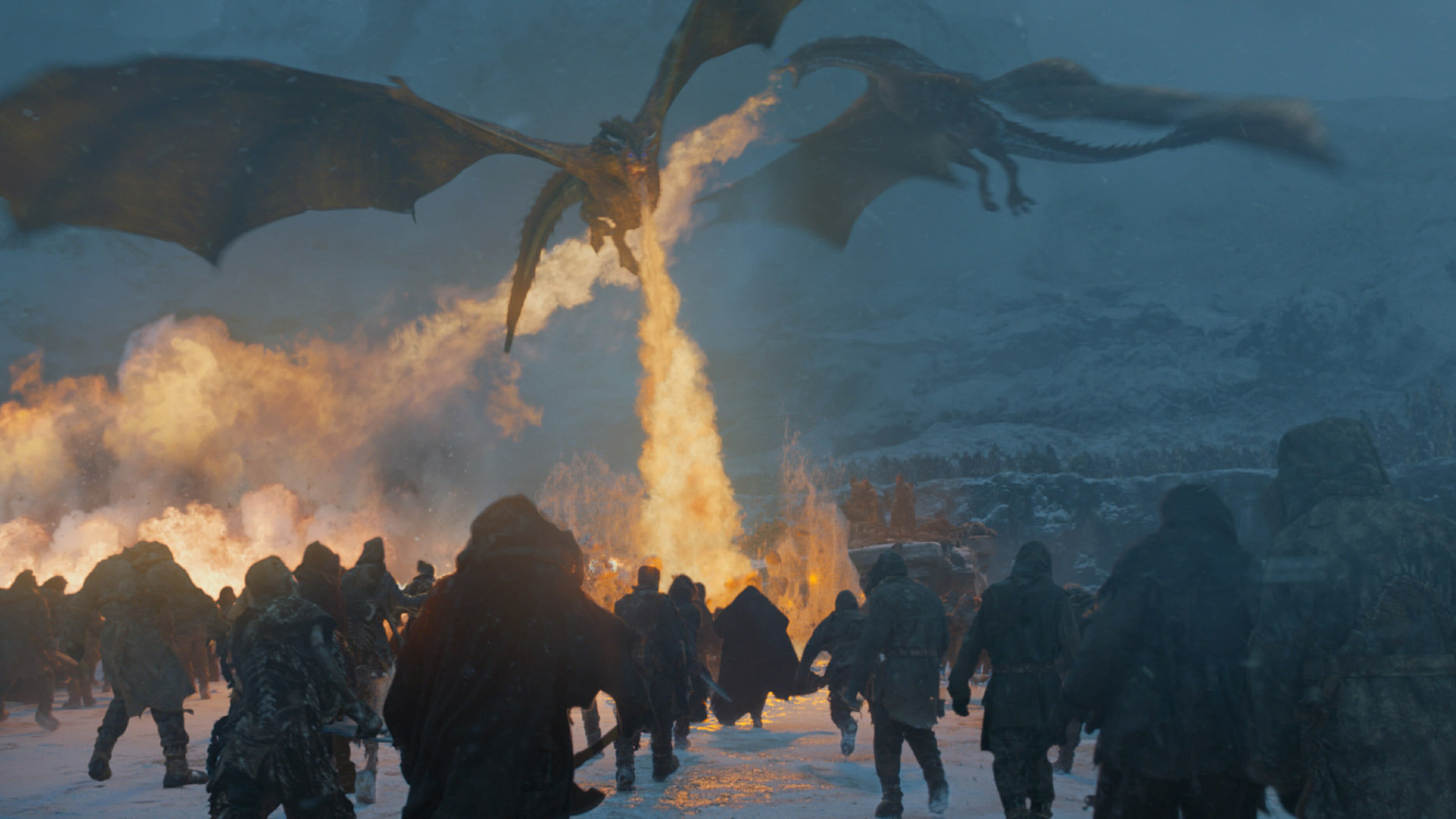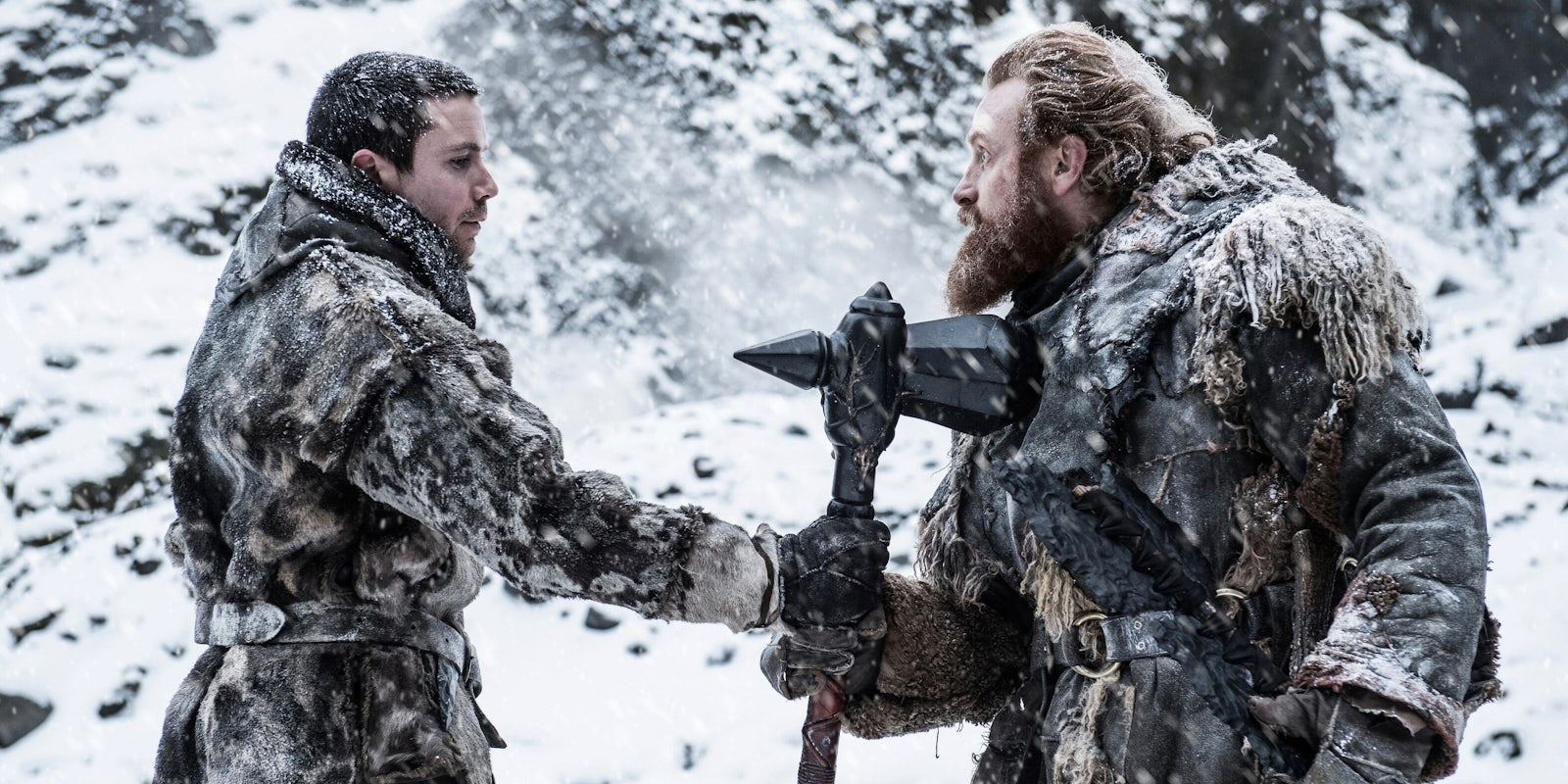Warning: This article contains spoilers for Game of Thrones season 7.
For all of its grounded political and character drama, Game of Thrones is still very much a fantasy show. It has dragons and direwolves, White Walkers and ice zombies, a young man who has access to knowledge of everything that’s ever happened (and ever will), resurrections, and a cult of assassins who can wear the faces of the dead.
Despite that, one of the show’s ongoing issues this season is one deeply rooted in realism—and even the director of Game of Thrones’ most recent episode has finally admitted to it.
In an interview with Variety, director Alan Taylor addressed fan complaints about the show’s pacing. Although it wasn’t the first time it came up this season, it all came to a head in the episode “Beyond the Wall” when the timeline for Jon’s mission and Dany’s rescue failed to meet even lenient measures of plausibility. Travel time on Game of Thrones has always been inconsistent, but fans have a certain understanding of the scale of the fictional world. This season seems to throw any awareness of that scale out the window (to the disorientation of many viewers), instead focusing on the spectacle and emotion of it all.
Taylor admitted that the show tried to make the timeline purposely vague by leaning on the “eternal twilight” that occurs north of the Wall, something viewers might not have even registered.
“We were aware that timing was getting a little hazy. We’ve got Gendry running back, ravens flying a certain distance, dragons having to fly back a certain distance…In terms of the emotional experience, [Jon and company] sort of spent one dark night on the island in terms of storytelling moments. We tried to hedge it a little bit with the eternal twilight up there north of The Wall. I think there was some effort to fudge the timeline a little bit by not declaring exactly how long we were there. I think that worked for some people, for other people it didn’t. They seemed to be very concerned about how fast a raven can fly but there’s a thing called plausible impossibilities, which is what you try to achieve, rather than impossible plausibilities. So I think we were straining plausibility a little bit, but I hope the story’s momentum carries over some of that stuff.”
Taylor hasn’t directed an episode of Game of Thrones since season 2, and the show has grown much bigger than he or anyone else expected. And so has the fandom, who may accept some of the show’s bigger fantasy elements and the precision of the Night King’s javelin-throwing capabilities but will scrutinize over every minute detail, whether they’re trying to solve a mystery or just make sense of what they watched. They’ll try to calculate whether the timeline does work within the construct of Westeros; it just might if enough factors fall into place. They’ll theorize whether Bran warged into the pommel of Jon’s sword Longclaw, something Taylor’s also had to address this week. And they’ll try to fill plot holes with extensive theories only to discover a few episodes later that the answer is simple—and a result of poor writing.

It’s nowhere near the first time Game of Thrones has played with time and distance like this. One of the first major complaints about the show’s pacing issues—which have only gotten worse—took place after trying to figure out how Euron Greyjoy just happened to sneak up on the Dornish and Ironborn fleets after they just left Dragonstone in “Stormborn.” (For what it’s worth, King’s Landing and Dragonstone are a lot closer to each other than you may think.) Then it evolved to other season 7 plotlines: How did Jaime Lannister and his army get to Highgarden so fast? And how did Euron’s fleet arrive at Casterly Rock just in time to taunt the Unsullied soldiers who captured it.
“Eastwatch” had plenty of time-bending in its own right. Dany arrived back in Dragonstone after roasting the Tarlys alive; Tyrion Lannister and Davos Seaworth traveled to and from King’s Landing with Gendry in tow; and Jon, Davos, and Gendry sailed all the way to Eastwatch-by-the-Sea to meet up with Tormund Giantsbane, Sandor Clegane, Thoros of Myr, and Beric Dondarrion.
To be fair, we did have some of it in earlier seasons. In season 1 alone, we saw the Lannisters and King Robert Baratheon start out in King’s Landing and arrive in Winterfell by the middle of the first episode. For much of the series, that trip was shown to take more than one episode, including the journey Ned, Sansa, and Arya Stark made joining them.
The season 1 episode “The Pointy End,” even has a bit of speed involved. Early in the episode, Sansa was pressured to write the letter to her brother Robb that Arya’s now using against her. Robb received the letter in the very next scene and called for Maester Luwin to summon the banners. Enough time has passed for the Stark bannermen to arrive and feast at Winterfell. They marched south to the Neck, where Catelyn Stark—previously at the Eyrie—joined them. And soon, they’re looking to head to the Twins to convince Walder Frey to let them cross the River Trident. That is all in one episode, and although it’s hard to tell how much time has passed, you do know that time has passed.
While he spends most of season 7 in Winterfell, Littlefinger’s prior speedy traveling has become the stuff of legend (and memes) among fans. And Game of Thrones producer and writer Bryan Cogman told Entertainment Weekly last year that “We realized a while ago that if we tied ourselves in knots trying to make all the ‘story days’ line up between all the characters the momentum would suffer.”
The problem that fans took with “Beyond the Wall,” however, wasn’t merely one of trying to pinpoint how much time it might’ve taken for Gendry to run all the way back to Eastwatch-by-the-Sea or how fast a raven could fly to Dragonstone or how long it took Dany and her three dragons to save them all from complete annihilation. It’s fantasy, and besides, we don’t know how fast Dany’s dragons can fly. Even with a decent grip on time and distance, you can fudge things a bit without too much strife.

But not sweating the details requires there not being details to sweat. Thoros died after being mauled by a polar bear wight, but how did everyone not freeze to death on that island? And how did nobody notice the ice refreezing until Sandor Clegane threw a rock at a wight? How did Jon not die of hypothermia after falling into the lake and riding off on Benjen Stark’s horse in frozen solid clothing? While we can accept Catelyn Stark making an uneventful off-screen trip from the Eyrie to Winterfell in season 1, it’s harder to ignore the basic survival logic. Humans exposed to Arctic conditions have hours—not the days or weeks it would take a bird to fly across Westeros to call for help.
Given how the Night King was prepared to take down Viserion with that icy javelin, some fans have already theorized that the Night King was a greenseer to explain why he waited so long to attack his trapped quarry: He was waiting for Dany to arrive with her three dragons so he could kill one of them and take it for his own. If that’s not the case, it feels like you’re ignoring all rules of logic (yes, even fantasy logic) so you can get that epic “the Eagles are coming” moment before Viserion’s death breaks your heart. And time traveling issues aside, that moment did work for a lot of people.

It’s noteworthy that George R.R. Martin was never one to meticulously keep track of distances anyway. He said in 2002 and again in 2008—both long before Game of Thrones would exist or face similar questions—that he kept it vague so that fans couldn’t contact him and tell him how wrong his calculations might be.
“My suggestion would be to put away the ruler and the stopwatch, and just enjoy the story,” he told one fan in 2002.
As the show starts wrapping up we’re likely to see these issues more often. We don’t have time to spend time traveling across Westeros, and for some characters, there’s too much going on to keep them off-screen traveling for an episode or two; for example, Brienne of Tarth and Podrick Payne will make it to King’s Landing in time for Cersei’s meeting next week after leaving Winterfell in “Beyond the Wall.” Maybe we’ll even see a self-aware joke in season 8 like we did with Davos’ “rowing joke.”
It’ll be much easier, as Martin put it, to just “enjoy the story.” That won’t stop fans from trying to logic their way through Westeros, and we’ll see even more wacky theories come out before the end. But next time, the writers and directors will have a harder time at acting surprised at the amount of scrutiny put on the more human parts of their fantasy epic.
H/T io9


